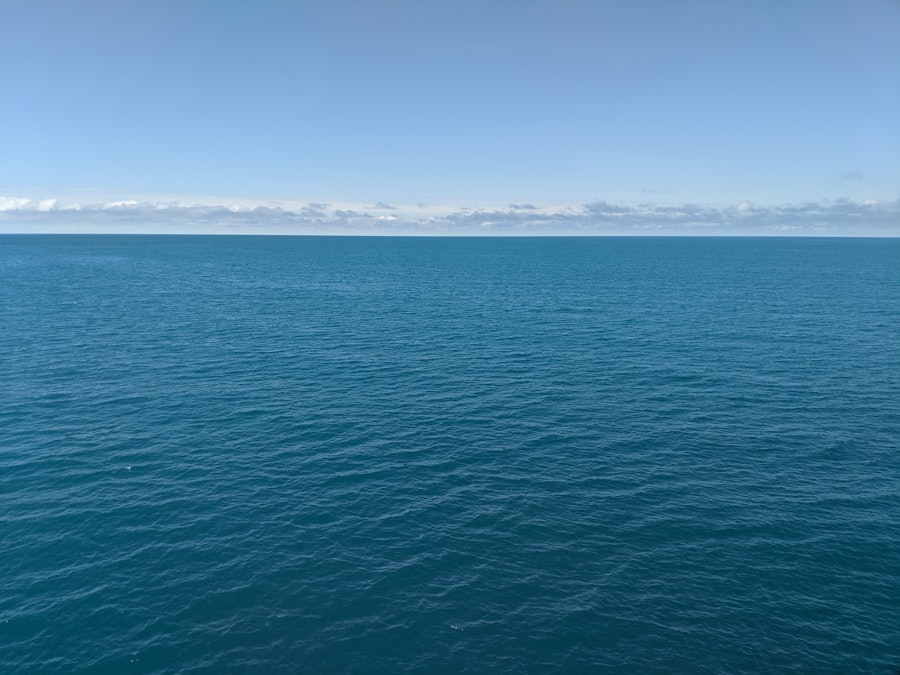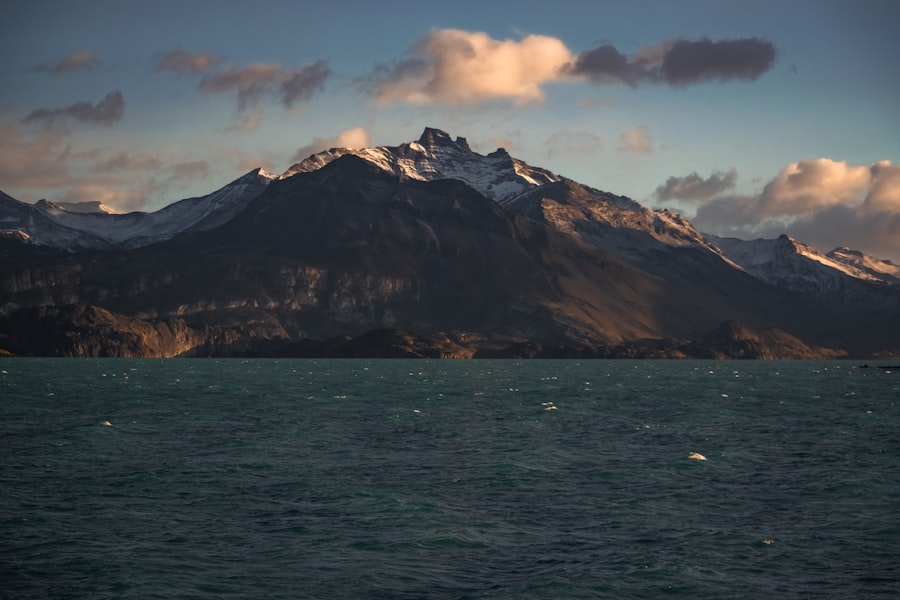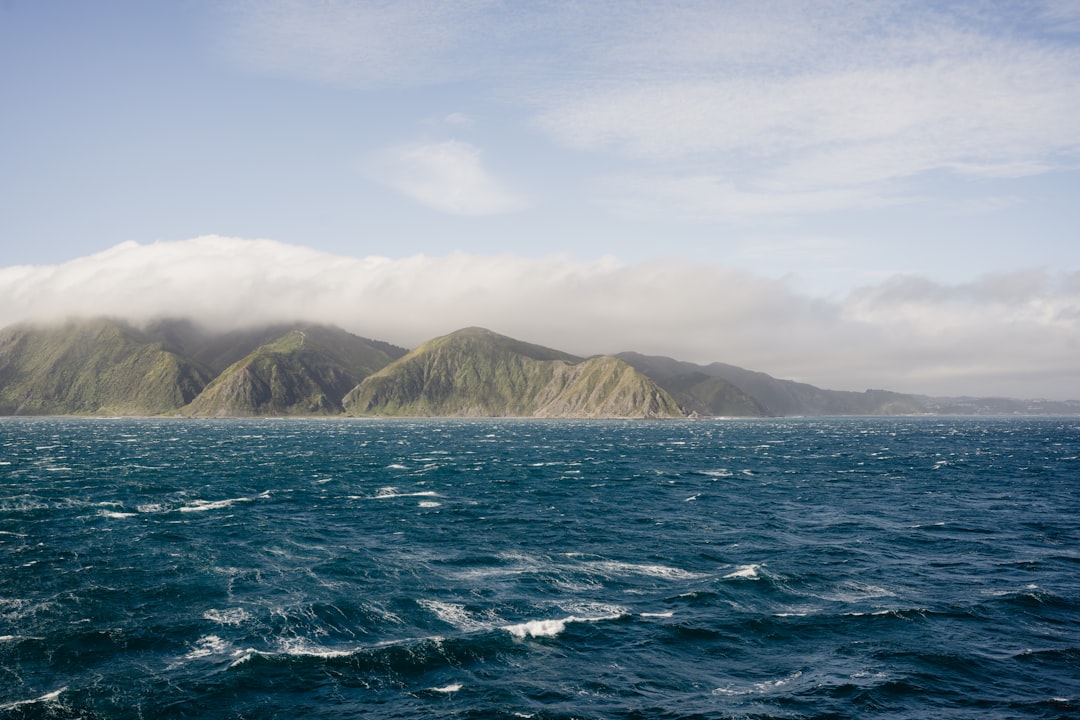The Drake Passage, a body of water situated between the southern tip of South America and Antarctica, is renowned for its tumultuous seas and unpredictable weather. This narrow stretch of ocean, measuring approximately 800 kilometers (500 miles) wide, serves as a critical maritime route for vessels traveling to and from the Antarctic region.
The geographical significance of the Drake Passage cannot be overstated. It acts as a conduit for the Antarctic Circumpolar Current, which flows unimpeded around the continent of Antarctica. This current plays a vital role in regulating global climate patterns and marine ecosystems.
The unique confluence of cold polar waters and warmer sub-Antarctic waters creates a rich environment for marine life, making the passage an area of interest for scientists studying oceanography and climate change. Understanding the dynamics of this passage is essential for anyone planning to navigate its waters, as it presents both opportunities and challenges.
Key Takeaways
- The Drake Passage is a body of water between South America’s Cape Horn and the South Shetland Islands of Antarctica, known for its rough seas and challenging conditions.
- Weather conditions in the Drake Passage can be unpredictable and extreme, with strong winds, high waves, and rapidly changing temperatures.
- The best time to cross the Drake Passage is during the austral summer (November to March) when the weather is relatively milder and the sea conditions are more favorable.
- Navigational challenges in the Drake Passage include icebergs, strong currents, and the potential for sudden storms, requiring careful route planning and constant monitoring.
- Safety precautions for crossing the Drake Passage include securing all loose items, wearing appropriate clothing and gear, and following the instructions of experienced crew members.
Weather conditions in the Drake Passage
The weather conditions in the Drake Passage are notoriously volatile, characterized by rapid changes that can occur within a matter of hours. The region is influenced by a variety of climatic factors, including the meeting of cold polar air masses with warmer air from the north. This interaction often leads to the formation of storms, which can generate high winds and rough seas.
Sailors and travelers must be prepared for these sudden shifts in weather, as they can significantly impact navigation and safety. During certain times of the year, particularly in winter, the Drake Passage can experience extreme weather events, including powerful storms that produce waves exceeding 10 meters (33 feet). These conditions can pose serious risks to vessels attempting to cross the passage.
Conversely, during the summer months, the weather tends to be more stable, although it remains unpredictable. Travelers should always monitor weather forecasts and be equipped to adapt to changing conditions while at sea.
Choosing the right time to cross the Drake Passage

Selecting the optimal time to cross the Drake Passage is crucial for ensuring a safer and more pleasant journey. The passage is typically navigated during two main seasons: summer and winter. The summer months, from late November to early March, are generally considered the best time for crossing due to milder weather conditions and calmer seas.
During this period, temperatures are more temperate, and daylight hours are extended, providing better visibility for navigation. In contrast, winter crossings are rare and often fraught with challenges due to harsh weather conditions. Those who choose to embark on a winter journey must be exceptionally well-prepared and experienced in handling rough seas.
It is essential for travelers to consider their own comfort levels and sailing experience when deciding on the timing of their crossing. Consulting with experienced mariners or tour operators can provide valuable insights into the best times to navigate this formidable passage.
Navigational challenges in the Drake Passage
| Challenge | Description |
|---|---|
| Strong Winds | High wind speeds can make navigation difficult and dangerous. |
| Rough Seas | The passage is known for its rough and unpredictable seas, making navigation challenging. |
| Narrow Passage | The narrowness of the passage can make it difficult for large vessels to navigate. |
| Icebergs | The presence of icebergs in the area poses a navigational hazard. |
Navigating the Drake Passage presents a unique set of challenges that require skill and experience. The combination of strong currents, shifting winds, and unpredictable weather patterns can create treacherous conditions for even the most seasoned sailors. One of the primary navigational challenges is the presence of icebergs and sea ice, particularly during certain times of the year when they drift northward from Antarctica.
These obstacles can pose significant hazards to vessels, necessitating careful route planning and constant vigilance. Additionally, the convergence of different oceanic currents in the Drake Passage can lead to sudden changes in sea state. Sailors must be adept at reading these conditions and adjusting their course accordingly.
The use of advanced navigational technology, such as GPS and radar systems, can greatly enhance safety and efficiency during crossings. However, reliance on technology should not replace traditional seamanship skills; understanding the natural environment remains paramount for successful navigation through this challenging waterway.
Safety precautions for crossing the Drake Passage
Safety should always be a top priority when crossing the Drake Passage. Mariners are advised to take several precautions to mitigate risks associated with this unpredictable body of water. First and foremost, thorough preparation is essential.
This includes conducting regular maintenance checks on vessels to ensure that all equipment is functioning properly before departure. Additionally, travelers should familiarize themselves with emergency procedures and safety protocols specific to their vessel. Another critical safety measure involves monitoring weather forecasts closely before and during the crossing.
Having access to real-time weather updates can help sailors make informed decisions about their route and timing. It is also advisable to travel in groups or as part of an organized expedition, as this provides additional support and resources in case of emergencies. By prioritizing safety and preparedness, travelers can significantly reduce their risks while navigating the Drake Passage.
Wildlife encounters in the Drake Passage

The Drake Passage is not only known for its challenging conditions but also for its rich biodiversity. The waters are home to a variety of marine life, including whales, seals, and numerous species of seabirds. Travelers crossing this passage often have the opportunity to witness these magnificent creatures in their natural habitat.
Species such as humpback whales, orcas, and blue whales are frequently spotted during crossings, making it a thrilling experience for wildlife enthusiasts. Birdwatchers will also find plenty to admire in the skies above the Drake Passage. Albatrosses, petrels, and other seabirds are commonly seen soaring over the waves, taking advantage of the strong winds that characterize this region.
Observing these animals in their natural environment adds an enriching dimension to any journey through the passage. Travelers are encouraged to bring binoculars and cameras to capture these unforgettable wildlife encounters.
Navigation routes and strategies for crossing the Drake Passage
When planning a crossing of the Drake Passage, understanding navigation routes and strategies is essential for a successful journey. The most common route taken by vessels is from Ushuaia, Argentina, to Port Stanley in the Falkland Islands or directly to Antarctica. This route allows sailors to take advantage of prevailing winds and currents while minimizing exposure to rough seas.
Sailors should also consider alternative routes based on current weather conditions and sea state. For instance, if strong winds are forecasted from one direction, adjusting the course slightly may help avoid particularly turbulent areas. Utilizing charts that detail ocean currents and potential hazards can aid in route planning as well.
Experienced mariners often share insights about their own strategies for navigating these waters, which can be invaluable for those new to crossing the Drake Passage.
Emergency procedures in the event of rough seas or extreme weather
Despite careful planning and preparation, emergencies can still arise while crossing the Drake Passage due to its unpredictable nature. It is crucial for sailors to have established emergency procedures in place before embarking on their journey. This includes having a well-stocked emergency kit that contains essential supplies such as flares, first aid materials, food rations, and water.
In addition to physical supplies, crew members should be trained in emergency protocols such as man-overboard procedures or how to handle severe weather situations. Regular drills can help ensure that everyone on board knows their roles in case of an emergency. Communication equipment should also be tested prior to departure; having reliable means of contacting rescue services or other vessels can be lifesaving during critical situations.
Equipment and gear needed for crossing the Drake Passage
Equipping oneself with appropriate gear is vital for anyone planning to cross the Drake Passage. Given its notorious reputation for rough seas and unpredictable weather, travelers should prioritize comfort and safety when selecting their equipment. Essential items include high-quality life jackets or personal flotation devices (PFDs), which should be worn at all times while on deck.
In addition to safety gear, clothing suitable for cold and wet conditions is crucial. Layering is recommended; thermal base layers combined with waterproof outer layers can help regulate body temperature while keeping individuals dry during inclement weather. Footwear should also be chosen carefully; non-slip shoes with good grip are essential for maintaining stability on deck during rough seas.
Tips for a comfortable and enjoyable crossing of the Drake Passage
While crossing the Drake Passage can be daunting due to its challenging conditions, there are several tips that travelers can follow to enhance their experience. First and foremost, maintaining a positive mindset is key; embracing the adventure rather than fearing it can make all the difference in how one perceives the journey. Staying hydrated and well-nourished is also important during crossings; consuming light meals that are easy on the stomach can help prevent seasickness.
Additionally, finding ways to occupy oneself during long stretches at sea—such as reading books or engaging in conversations with fellow travelers—can help alleviate boredom and anxiety. Finally, taking time to appreciate the stunning scenery and wildlife along the way can transform what might seem like an arduous journey into an unforgettable adventure.
Arrival in New Zealand: customs and immigration procedures
Upon successfully crossing the Drake Passage and arriving in New Zealand, travelers must navigate customs and immigration procedures before fully enjoying their new surroundings. New Zealand has strict regulations regarding biosecurity; visitors are required to declare any food items or agricultural products they may have brought with them. This is crucial for protecting local ecosystems from invasive species.
Additionally, travelers should ensure that they have all necessary documentation ready for inspection upon arrival. This includes passports, visas (if required), and any relevant health declarations related to COVID-19 or other health concerns. Familiarizing oneself with New Zealand’s customs regulations prior to arrival can streamline this process significantly, allowing travelers to transition smoothly from their maritime adventure into exploring all that this beautiful country has to offer.
The Drake Passage is a renowned maritime route that connects the Atlantic and Pacific Oceans, situated between the southern tip of South America and Antarctica. This treacherous stretch of water is infamous for its unpredictable weather and strong currents, making it a challenging passage for sailors. Interestingly, New Zealand, though not directly connected to the Drake Passage, shares a similar maritime heritage with its own set of challenging waters and rich history of exploration. For those interested in learning more about geographical explorations and maritime routes, you might find this related article insightful. It delves into various geographical quests and the historical significance of such passages.
WATCH NOW! Drake Passage: Earth’s Deadliest Waters Revealed
FAQs
What is the Drake Passage?
The Drake Passage is the body of water between the southern tip of South America and the northern tip of the Antarctic Peninsula. It is known for its rough seas and strong winds, making it one of the most challenging maritime routes in the world.
How does the Drake Passage relate to New Zealand?
The Drake Passage is significant for New Zealand because it is a key route for ships traveling between New Zealand and the Antarctic region. It is also an important area for scientific research and exploration.
What is the significance of the Drake Passage for marine life?
The Drake Passage is a critical area for marine life, as it serves as a major gateway for the movement of ocean currents and marine species between the Atlantic, Pacific, and Indian Oceans. It is also home to a diverse range of marine wildlife, including whales, seals, and seabirds.
What are the challenges of navigating the Drake Passage?
The Drake Passage is known for its extreme weather conditions, including strong winds, high waves, and unpredictable weather patterns. Navigating this passage can be challenging for ships, making it a notorious area for rough seas and potential hazards.
How does the Drake Passage impact weather patterns in New Zealand?
The weather patterns in New Zealand can be influenced by the conditions in the Drake Passage, as the passage serves as a pathway for the movement of weather systems and atmospheric conditions. This can impact the climate and weather patterns in New Zealand.
